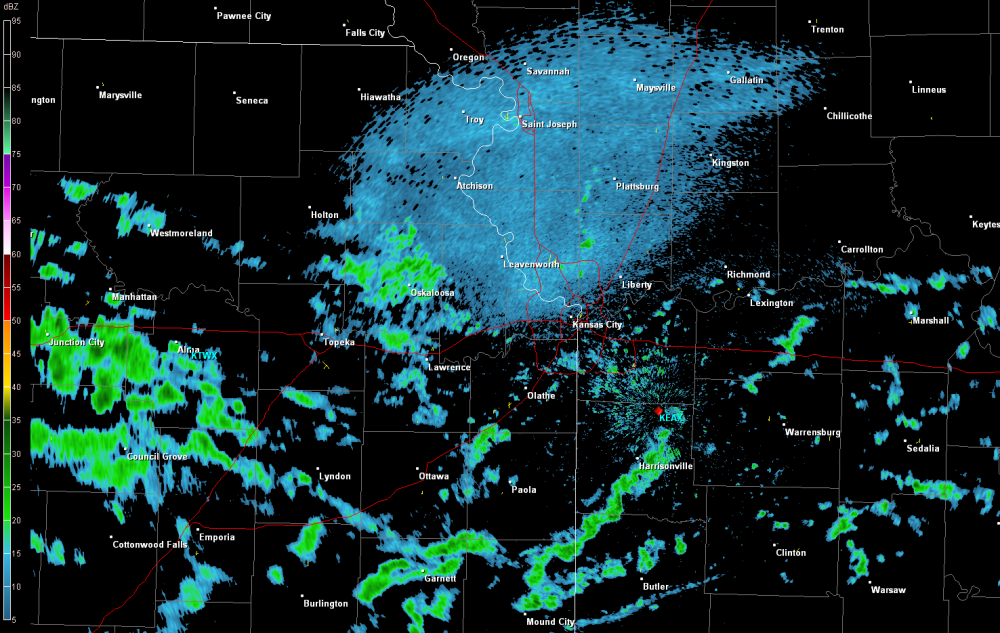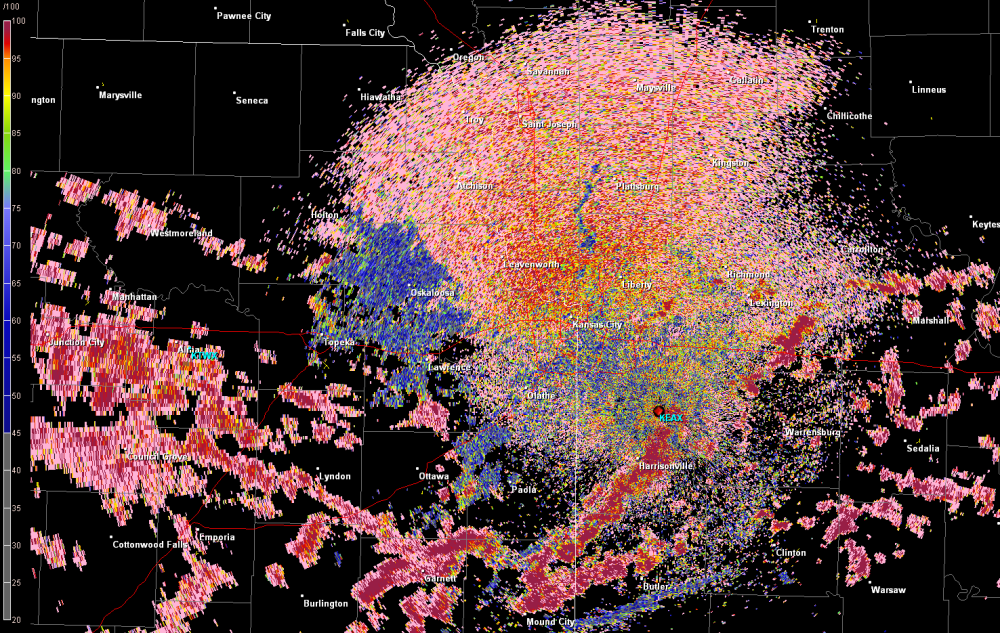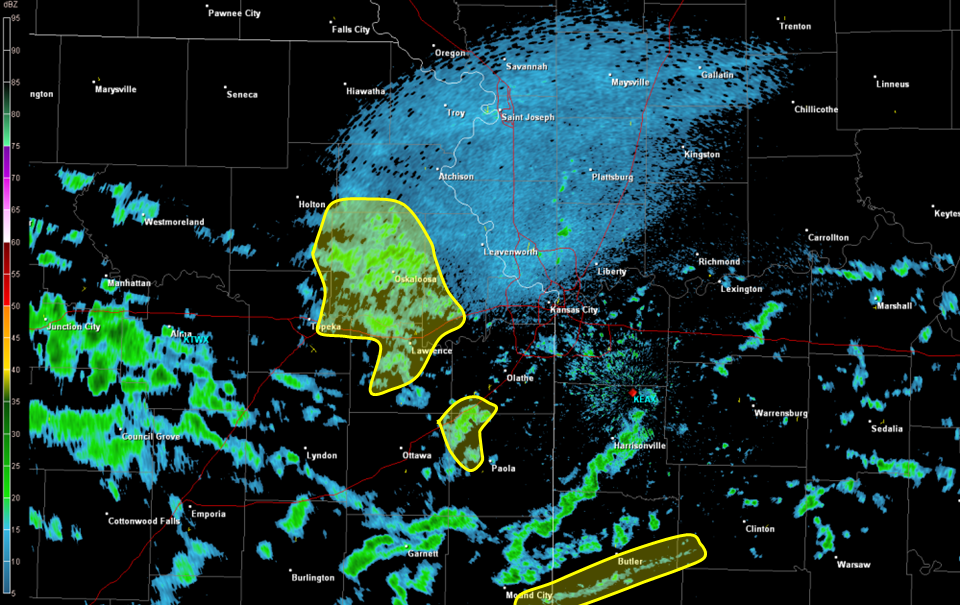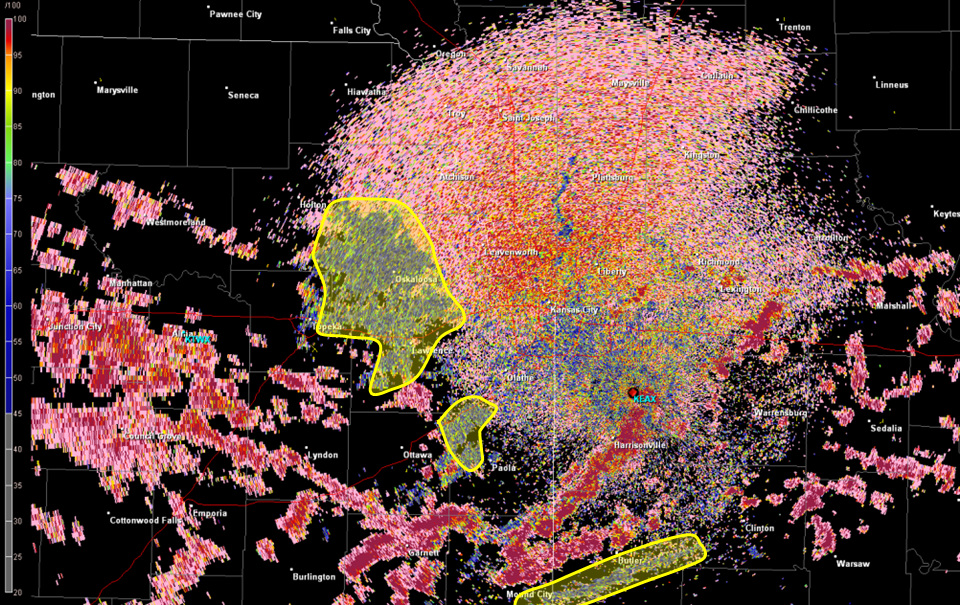Below is an example of a typical radar image that you will see on your computer, tablet or smart phone. You can see the characteristic light to dark green values indicating the radar is detecting precipitation, or is it?
With dual-pol radar products, meteorologists have additional data to differentiate radar echoes that are caused by precipitation versus echoes that can be caused by insects, birds, smoke, etc.
We’ve highlighted the area of interest below which shows light and dark greens that appear to be precipitation at first, however they are actually non-meteorological, meaning it isn’t actually rain!
Just another reason why you can’t always trust what the radar is telling you!







